|
(11) | EP 0 443 710 B1 |
| (12) | EUROPEAN PATENT SPECIFICATION |
|
|
| (54) |
Benzoquinone antiallergy and antiinflammatory agents Antiallergische und antiinflammatorische Mittel auf der Basis von Benzoquinon Agents antiallergiques et antiinflammatoires à base de benzoquinones |
|
|
|||||||||||||||||||||||||||||||
| Note: Within nine months from the publication of the mention of the grant of the European patent, any person may give notice to the European Patent Office of opposition to the European patent granted. Notice of opposition shall be filed in a written reasoned statement. It shall not be deemed to have been filed until the opposition fee has been paid. (Art. 99(1) European Patent Convention). |
[0001] This invention relates to novel benzoquinone compounds and their use. The new compounds of the present invention are inhibitors of both the cyclooxygenase (CO) and lipoxygenase (LO) enzymes, and are of use in the treatment or alleviation of allergic or inflammatory conditions in mammals including human.
[0002] Arachidonic acid is known to be the biological precursor of several groups of endogenous metabolites, prostaglandins including prostacyclins, thromboxanes and leukotrienes. The first step of the arachidonic acid metabolism is the release of esterified arachidonic acid and related unsaturated fatty acids from membrane phospholipids, via the action of phospholipase. Free fatty acids are then metabolized either by cyclooxygenase to produce the prostaglandins and thromboxanes or by lipoxygenase to generate hydroperoxy fatty acids which may be further converted to the leukotrienes. The prostaglandins exhibit diverse physiological effects depending upon their structure. For example, PGE and PGA inhibit gastric secretion as well as lower arterial blood pressure. The thromboxane, especially, thromboxane A₂ is a potent vasoconstrictor and platelet aggregatory substance. The leukotrienes are the biological source of the slow reacting substance of anaphylaxis (SRS-A), a chemical mediator in allergic bronchial asthma.
[0003] Aspirin and most other non-steroidal antiinflammatory drugs inhibit the cyclooxygenase enzyme. Both antiinflammatory activity and analgesic activity associated with these drugs are rationalized in terms of their inhibition of the action of cyclooxygenase. The lipoxygenase inhibiting activity of one agent, AA861 [2,3,5-trimethyl-6-(12-hydroxy-5,10-cyclodecadiynyl)-1,4-benzoquinone], has been reported [see, Yoshimoto et al., Biochem, et Biophys. 713, 470-473 (1982)]. CGS-5391B [(C. E. Hock et al., Prostaglandins, 28, 557-571 (1984)] has recently become known as a combination cycloxygenase and lipoxygenase inhibitor.
[0004] Besides, PCT Patent Application PCT/JP84/00452 (WO 85/01289) and Japanese patent publication No. 107958/1988 describe and claim a number of benzoxazolone and benzothiazolone derivatives useful for the treatment of inflammatory conditions and thrombosis.
[0005] Musso and Döpp in Chemische Berichte, 1966, 99, 1470-1478 disclose the synthesis and light absorption of 5-[2,4-dimethoxyanilino]-2,3-dimethylbenzoquinone, while Petersen et al in Z. Krebsforschung, 1969, 72, 162-175 describe various derivatives of 2-amino-1,4-naphthoquinones having carcinostatic activity.
[0006] The compounds of the present invention are of the formula
or the pharmaceutically acceptable salts thereof, wherein; R¹ is hydrogen, alkyl of one to five carbon atoms, cycloalkyl of three to seven carbon atoms, phenylalkyl of seven to nine carbon atoms, -COR⁴ where R⁴ is alkyl of one of five carbon atoms, phenyl, hydroxy, amino, alkoxy of one of five carbon atoms, omega-carboxyalkyl of two to five carbon atoms or omega-alkoxycarbonylalkyl of three to eight carbon atoms or -CH(OZ)R⁸where R⁸ is hydrogen, alkyl of one to three carbon atoms, omega-carboxyalkyl of two to five carbon atoms or omega-alkoxycarbonylalkyl of three to eight carbon atoms and Z is hydrogen or methoxyethoxymethyl;
R² is hydrogen or phenyl;
R³ is (a) cycloalkyl of three to seven carbon atoms, (b) cycloalkylalkyl of five to seven carbon atoms which optionally contain an oxygen, sulfur or nitrogen atom as a ring member, (c) a moiety of the formula
where m is an integer of 0 to 3 and R⁵ and R⁶ are each hydrogen, halo, carboxy, carbamoyl, carboalkoxy of two to four carbon atoms, alkoxycarbonylmethyl of three to five carbon atoms, or sulfamoyl (d) substituted alkyl of the formula R⁷-alkyl where said alkyl is of five to twelve carbon atoms and R⁷ is hydroxy, carboxy, carboalkoxy of two to four carbon atoms or hydroxyalkoxy of two to four carbon atoms ; or R² and R³ when taken together with the nitrogen atom to which they are attached form a structure of the formula
A preferred group of compounds are those where R¹ and R² are each hydrogen. Especially preferred within this group is the compound where R³ is a moiety of the formula
where m is 0 and R⁵ and R⁶ are each hydrogen.
[0007] A second group of preferred compounds are those where R¹ is -COR⁴ or -CH(OZ)R⁸ where R⁴ is alkyl of one to five carbon atoms, R⁸ is alkyl of one to three carbon atoms or hydrogen, Z is hydrogen and R² is hydrogen. Especially preferred within this group is the compound where R¹ is -COR⁴ where R⁴ is methyl and R³ is a moiety of the formula
wherein m is 0 and R⁵ and R⁶ are each hydrogen and where R¹ is -CH(OZ)R⁸where R⁸is hydrogen or methyl and R³ is a moiety of the formula
where m is 0 and R⁵ and R⁶ are each hydrogen.
[0008] A third group of preferred compounds are those where R² and R³ when taken together with the nitrogen atom to which they are attached form a structure of the formula
Especially preferred within this group is the compound where R¹ is hydrogen and R² and R³ when taken together with the nitrogen atom to which they are attached form a structure of the formula
[0009] The present invention also includes a pharmaceutical composition for administration to a human being which comprises a compound of formula I and a pharmaceutically acceptable carrier or diluent.
[0011] The pharmaceutically acceptable salts of the compounds of the formula (I) are those formed from acids which form non-toxic acid addition salts, for example, the hydrochloride, hydrobromide, sulfate or bisulfate, phosphate, acetate, citrate, fumarate, gluconate, lactate, maleate, succinate, tartrate, methanesulfonate, benzenesulfonate, toluenesulfonate and formate salts. When R¹ or R³ contain a carboxy group it is possible to form salts with organic and inorganic bases. These include such organic bases as triethylamine, ethanolamine and triethanolamine, and such inorganic bases as alkali metal hydroxides or alkaline earth metal hydroxides.
[0013] The compounds of formula (I) may be prepared by a number of different routes. In one embodiment, they are prepared from 2-substituted or 2-unsubstituted 5,6-dimethylbenzoquinone (II) and a substituted amine according to the following reaction:
[0014] In the above formulae, R¹, R² and R³ are as previously defined. The amine substituents, R² and R³ are preferably H, alkyl, or aralkyl group. The reaction is preferably conducted at ambient temperature in the presence of an oxidizing agent. The oxidizing agent can be benzoquinone (II) itself. Elevated tempertaures can be employed without any significant disadvantage. Suitable solvents which do not react with the reactants and/or products are, for example methanol, ethanol, dichloromethane and chloroform. When a preferred temperature is used, the reaction is substantially complete within a few hours. On completion, product (I) can be isolated and/or purified conventionally, e.g. recrystallization or chromatography.
[0015] In another embodiment, the compounds of formula (I) are prepared by the following reaction, using 2-substituted or unsubstituted 5,6-dimethylhydroquinone (III) and a substituted amine:
[0016] In the above formulae, R¹ and R² are as previously defined. The amine substituent, R² is preferably an aryl group. The reaction is preferably conducted at ambient temperature in the presence of an oxidizing agent. The oxidizing agent is preferably sodium iodate, although sodium periodate, sodium chlorate or manganese dioxide, can also be employed. Suitable solvents which do not react with the reactants and/or products are, for example, aqueous methanol. When the preferred temperature is used, the reaction usually requires several hours to several days. The product of formula (I) is isolated by standard methods and is purified by conventional means, such as recrystallization or chromatography.
[0017] In another emobidment, the compounds of formula (I) (R³ is alkyl, arylalkyl or R⁷ alkyl) are also prepared from the compounds of formula (I) (R³ is hydrogen) by the following process:
The amine substituents, R² is preferably aryl and RCH₂ is aralkyl or R⁷ alkyl. In the above formula, R¹, R² and R⁷ are as previously defined. The first step involves treatment of a group of compounds (I) (R³=H) with a reducing agent. The preferred reducing agent is sodium hydrosulfite, although catalytic hydrogenation such as in the presence of palladium on carbon, can also be employed. The reaction is preferably conducted at ambient temperature. Suitable solvents which do not react with the reactants and/or products are, for example, diethyl ether/water or ethyl acetate/water. When the preferred temperature is used, the reaction usually requires several hours. On completion, product (IV) can be isolated and/or purified conventionally, e.g. recrystallization. It is more convenient not to isolate this product but to subject it to reaction conditions of the second step.
[0018] The second step involves a dehydrating reaction with an aldehyde in the presence of an acid. The acid can be either protic or non-protic, such as p-toluenesulfonic acid, camphorsulfonic acid or borontrifluoride etherate. The preferred temperature for this reaction is from 0 to 110°C. Purification of product (V) can be achieved by conventional means such as recrystallization or chromatography. The third step involves reduction of the C-N bond by reaction with an appropriate hydrogen source. For example, compound (V) may be reduced using metal hydrides. The hydride agent suitably employed in this reduction includes sodium borohydride, sodium cyanoborohydride, or lithium cyanoborohydride. This reaction is conducted at ambient temperature, with an excess of a hydride agent in e.g. acetic acid. A preferred temperature for this reaction is from 15 to 50°C. Reduction is ordinarily complete within an hour. On completion, product (VI) can be isolated and/or purified conventionally, e.g. recrystallization. It is more convenient not to isolate this product, but to subject it to a reaction condition of the forth step. The forth step involves oxidation of the hydroquinone (VI) moiety with an appropriate oxidizing agent. For example, compound (VI) may be oxidized with ferric chloride, manganese dioxide, sodium periodate or sodium iodate. The reaction is preferably conducted at ambient temperature. Suitable solvents which do not react with the reactants and/or products are, for example, water and/or methanol. The product of formula (I) is isolated by standard methods and is purified by conventional means, such as recrystallization or chromatography.
[0019] The starting materials (II) (R¹=H) or (III) (R¹=COCH₃) are either known compounds or may be prepared by the methods reported in the art reference, see e.g., Etsuro Kurosawa, Bull. Chem. Soc. of Japan, 34, 300 (1961). The other starting materials may be prepared by the following process.
[0020] In the above formulae, COR⁹ may correspond to R¹ as previously defined or may be a functional group which can be converted to R¹. The first step involves treatment of a group of compounds (VII) with a metalating agent followed by carbon dioxide treatment. The preferred metalating agents are alkyl lithium or magnesium. Suitable solvents which do not react with the reactants and/or products are, for example, diethyl ether, tetrahydrofurane and lower hydrocarbons. On completion, product (VIII) can be isolated and/or purified conventionally, e.g. recrystallization. The second step involves esterification of amidation. These reaction conditions may be conducted by standard procedures, for example, in references, "Comprehensive Organic Chemistry" Sir Deric Barton, F.R.S. and W. David Ollis, F.R.S. Eds., Pergamon press, 1979, vol. 2, pp. 869 and 957.
[0021] The third step involves treatment of a group of compounds (IX,) with an oxidizing agent. The preferred oxidizing agent is, for example, ceric ammonium nitrate. The oxidation is ordinarily complete within several seconds at ambient temperature. The product of formula (X) is isolated by standard methods and is purified by conventional means, such as recrystallization or chromatography.
[0023] In the above formulae, COR¹⁰ may correspond to R¹ as previously defined or may be a functional group which can be converted to R¹. In this particular reaction, acceptable Lewis acid catalysts or solvents may be as described in an art literature, such as "Organic Chemistry," Jerry March, Ed., John Wiley & Sons, Inc., 1985, pp. 484. The acylated product (IX) may be treated with an oxidizing agent. The preferred oxidizing agent is, for example, ceric ammonium nitrate. The oxidation is ordinarily complete within several seconds at ambient temperature. The product of formula (X) is isolated by standard methods and is purified by conventional means, such as recrystallization or chromatography.
[0024] The pharmaceutically acceptable salts of the novel compounds of formula (I) are readily prepared by contacting said compound with a stoichiometric amount of an appropriate mineral or organic acid or base in either an aqueous solution or a suitable organic solvent. The salt may then be obtained by precipitation or by evaporation of the solvent. Among those salts enumerated earlier, an especially preferred salt is the hydrochloride or sodium.
[0025] The compounds of formula (I) possess inhibiting activity on the action of the cyclooxygenase as well as on the action of the lipoxygenase. This activity has been demonstrated by a cell culture assay using rat peritoneal cavity resident cells which determines the effect of said compounds on the metabolism of arachidonic acid.
[0026] The ability of the compounds of formula (I) to inhibit both enzymes make them useful for controlling the symptoms induced by the endogenous metabolites arising from arachidonic acid in a mammalian subject. The compounds are therefore valuable in the prevention and treatment of such disease states in which the accumulation of said arachidonic acid metabolite is the causative factor, e.g., allergic bronchial asthma, skin disorders, rheumatoid arthritis, osteoarthritis, and thrombosis.
[0027] Since conventional non-steroidal inflammatory agents such as aspirin only inhibit cyclooxygenase, they suppress inflammatory conditions as well as tend to cause adverse gastrointestinal reaction by virtue of the enzyme inhibition. Compounds of the present invention, however, as gastrointestinally cytoprotective in addition to possessing anti-allergy and antiinflammatory activities. Thus, they show less adverse effects and are of value for use as a safe drug.
[0028] When a compound of the formula (I) or a pharmaceutically acceptable salt thereof is to be used as either an anti-allergic agent or an antiinflammatory agent, it can be administered to a human subject either alone, or preferably, in combination with pharmaceutically acceptable carriers or diluents in a pharmaceutical composition, in accordance with standard pharmaceutical practice. A compound can be administered by a variety of conventional routes of administration including orally, parentally and by inhalation. When the compounds are administered orally, the dose range will be from about 0.1 to 20 mg/kg body weight of the subject to be treated per day in single or divided doses. If parental administration is desired, then an effective dose will be from 0.1 to 1.0 mg/kg body weight of the subject to be treated per day. In some instance it may be necessary to use dosages outside these limits, since the dosage will necessarily vary according to the age, weight and response of the individual patient as well as the severity of the patient's symptoms and the potency of the particular compound being administered.
[0029] For oral administration, the compounds of formula (I) can be administered, for example, in the form of tablets, powders, lozenges, syrups or capsules, or as an aqueous solution or suspension. In the case of tablets for oral use, carriers which are commonly used include lactose and corn starch, and lubricating agents, such as magnesium stearate, are commonly added. In the case of capsules, useful diluents are lactose and dried corn starch. When aqueous suspensions are required for oral use, the active ingredient is combined with emulsifying and suspending agents. If desired, certain sweetening and/or flavoring agents may be added. For intramuscular, intraperitoneal, subcutaneous and intravenous use, sterile solutions of the active ingredient are usually prepared, and the pH of the solutions should be suitably adjusted and buffered.
[0030] The present invention is illustrated by the following examples. However, it should be understood that the examples are simply illustrative and the invention is not limited to the specific details of these examples. Proton nuclear magnetic resonance spectra (NMR) were measured at 270 MHz unless otherwise indicated for solutions in deuteriochloroform and peak positions are expressed in parts per million (ppm) downfield from tetramethylsilance. The peak shapes are denoted as follows: s, singlet; d, doublet; t, triplet; q, quartet; m, multiplet; b, broad.
EXAMPLE 1
2-Anilino-5,6-dimethyl-1,4-benzoquinone
[0031] To a stirred solution of 2,3-dimethylhydroquinone (13.8 g, 0.1 mol) and aniline (18.6 g, 0.2 mol) in methanol (600 ml) was added sodium iodate (59.4 g, 0.3 mol) in water (600 ml) at room temperature. The mixture was stirred for 17 hours. The mixture was concentrated (removal of 600 ml of the solvent) and extracted with chloroform (700 ml x 3). The combined organic layers were dried and concentrated to a dark red purple oil. This oil was allowed to stand overnight. The residue was solidified and suspended in hexane. The resulting wet precipitates were collected by suction filtration, and the precipitates were suspended in diisopropyl ether. The precipitate was collected by suction filtration. The solid was washed with diisopropyl ether to afford dark brown solid (11.7 g). This (1.05 g) was dissolved in methanol (40 ml) and activated carbon (290 mg) was added. The mixture was stirred at 50°C for 10 minutes and filtered through celite. The residue was washed with methanol (10 ml). The combined filtrate was concentrated in vacuo. Recrystallization from methanol to afford russet flake crystals of the title compound (500 mg, 47.6%). This was dried at 50°C for three hours to give the product, mp 115.0-115.7°C/dec. The second crop was also available from the mother liquid (350 mg, 33%).
[0032] 1H NMR (270 MHz, CDCl₃) delta 7.42-7.33 (3H, m; ph-H x 2+NH), 7.22-7.12 (3H, m, ph-H), 6.15 (1H, s, H-3) , 2.06-2.03 (6H, m, CH₃ x 2) IR (KBr) v 3300, 1670, 1645.
EXAMPLE 11
Benzylamino-5,6-dimethyl-1,4-benzoquinone
[0034] To a solution of 2,3-dimethyl-1,4-benzoquinone (2.72 g, 20 mmol) in methanol (50 ml) was added benzylamine (2.14 g, 12 mmol) at room temperature. After being stirred for 1 hour, the solvent was removed and the residue was purified by a silica gel column chromatography (250 g, eluted with hexane/ethyl acetate). Recrystallization from ethyl acetate and diisopropyl ether gave maroon needle of the title compound (0.82 g, 34%) mp 110-111°C.
[0035] 1H NMR (270 MHz, CDCl₃) delta 7.36-7.26 (5H, m; Ph-H x 5), 5.93 (1H, br s; NH), 5.48 (1H, s; H-3), 4.28 (2H, d, J=5.9Hz, CH₂) 2.03 (3H, br s, CH₃), 2.00 (3H, br s, CH₃).
EXAMPLE 26
[0039] A stirred solution of 2-anilino-5,6-dimethyl-benzoquinone (1) (2.24 g, 0.04 mol) in diethyl ether (100 mL) was added a solution of sodium hydrosulfite (6.96 g, 0.04 mol) in water (20 mL). The mixture was vigorously stirred for 2.5 hours under nitrogen atmosphere. The organic layer was washed with brine and dried over magnesium sulfate. The solution was concentrated to afford dark purple oil (2). To the mixture was added benzene (32 mL), benzaldehyde (1.1 mL, 10.8 mmol) and a catalytic amount of camphorsulfonic acid. The mixture was stirred for 2 hours at reflux under nitrogen atmosphere. The mixture was washed with sodium bicarbonate solution then brine. The solution was dried and concentrated to give dark russet color amorphous solid. This was recrystallized from ethanol to give pale purple solid (3) (1.7 g, 76% yield). Mp 148.5-149.0°C.
[0040] 1H NMR (270 MHz, CDCl₃) delta 7.52-7.57 (m, 2H), 7.35-7.42 (m, 3H) 7.20-7.28 (m, 2H), 7.07 (br d, 2H, J=7.6Hz), 6.97 (br t, 1H, J=7.6Hz), 6.71 (s, 2H), 6.55 (s, 1H), 4.33 (s, 1H, OH), 2.11 (s, 3H), 2.10 (s, 3H). IR (KBr) v 1600, 1513.
[0041] To a stirred solution of the acetal (3) (1 g, 3 mmol) in acetic acid (4 ml) was added sodium cyanoborohydride (300 mg, 4.7 mmol) at room temperature. The mixture was stirred for 20 minutes and then extracted with ether. The extract was washed with brine and dried over magnesium sulfate. The solution was concentrated in vacuo to afford a pale russet color oil (4) (1 g). This hydroquinone was dissolved in methanol (10 ml), and then sodium iodate (1 g, 5 mmol) in water (10 ml) was added. The mixture was stirred for 2 hours. To this mixture was added sodium periodate (600 mg, 2.8 mmol) in order to complete the oxidation. The mixture was stirred for 1 minute, and then the mixture was diluted with water (50 ml) and ethyl acetate (100 ml). The separated organic layer was washed with brine and dried over magnesium sulfate. The solution was concentrated in vacuo to give a russet color oil (approx. 500 mg). Silica gel column chromatography eluted with hexane/ethyl acetate (20/1 - 15/1) followed by crystallization from hexane/diisopropyl ether to give russet color powder (100 mg, 12% yield). Mp 119.4-119.8°C.
[0042] 1H NMR (270 MHz, CDCl₃) delta 7.37-7.15 (8H, m), 7.08 (2H, br. d, J=7.6Hz), 5.83 (1H, s), 4.94 (2H, s), 1.98 (3H, br. s), 1.92 (3H, br. s). IR (KBr) v 1672, 1649, 1629.
EXAMPLE 29
[0043]
To a stirred suspension of the 2-acetyl-5,6-dimethyl-hydroquinone (1.8 g, 10 mmol) in methanol-water (1:2, 396 mL) was added aniline (2.48 9, 26.6 mmol) in methanol (33 mL). The mixture mostly became yellow clear solution. To the mixture was added sodium iodate in hot water (67 mL) and was stirred for 24 hours. The resulted precipitate was collected by suction filtration and extracted with ethyl acetate and water. The filtration was concentrated until 300 mL then extracted with ethyl acetate (200 mL x 2). The extract was washed with brine. The combined extracts were dried over magnesium sulfate and then concentrated. Chromatography on silica gel eluted with hexane-ethyl acetate (20:1 to 10:1) to afford the desired fraction. This was concentrated in vacuo to afford brown-russet color powder (2.8 g). This was recrystallized from ethanol to afford brown-russet color needle (2.0 g, 74.3%). Mp 115.4-116.3°C.
[0044] 1H NMR (270 MHz, CDCl₃) delta 12.97 (br s, 1H) 7.22-7.41 (m, 3H) 7.06 (d, 2H, J=6.8Hz), 2.63 (s, 3H) 2.10 (br s, 3H), 1.96 (br s, 3H)
[0046] To a stirred solution of the 3-acetyl-2-anilino-5,6-dimethyl-1,4-benzoquinone (700 mg, 2.6 mmol) in tetrahydrofuran-water (5:4, 12.5 mL) was added sodium borohydride (197 mg, 5.2 mmol) at room temperature. The mixture was stirred at room temperature for 10 minutes. 1N hydrochloric acid (1 mL) and ethyl acetate (50 mL) were added and the mixture was stirred for 10 minutes. The organic layer was washed with sodium bicarbonate solution and brine. The solution was dried over magnesium sulfate and concentrated in vacuo to give pale red oil. This product was dissolved in methanol (7 mL). To the solution was added sodium periodate in water at room temperature. The mixture was stirred for 5 minutes then extracted with ethyl acetate (50 mL) and washed with brine (10 mL x 4). The solution was dried over magnesium sulfate and concentrated in vacuo to give a dark red oil. This was subjected to a silica gel column eluted with ethyl acetate hexane (1:3.5). The desired red color fraction was crystallized from hexane-diisopropyl ether to give red powder of the title compound (380 mg, 54% yield). Mp 101.2-101.6°C.
Claims for the following Contracting State(s): AT, BE, CH, DE, DK, FR, GB, IT, LI,
LU, NL, SE
1. A compound of the formula

or the pharmaceutically acceptable salts thereof, wherein:
R¹ is hydrogen, alkyl having one to five carbon atoms, cycloalkyl having three to seven carbon atoms, phenylalkyl having from seven to nine carbon atoms, -COR⁴ where R⁴ is alkyl having from one to five carbon atoms, phenyl, hydroxy, amino, alkoxy having one to five carbon atoms, omega-carboxyalkyl having two to five carbon atoms, omega-alkoxycarbonylalkyl having from three to eight carbon atoms or -CH(OZ)R⁸ where R⁸ is hydrogen, alkyl having one to three carbon atoms, omega-carboxyalkyl having two to five carbon atoms or omega-alkoxycarbonyl having three to eight carbon atoms and Z is hydrogen or methoxyethoxymethyl;
R² is hydrogen or phenyl;
R³ is (a) cycloalkyl having three to seven carbon atoms, (b) cycloalkylalkyl having five to seven carbon atoms which optionally contains an oxygen, sulfur or nitrogen atom as a ring member, (c) a moiety of the formula

wherein m is an integer of 0 to 3 and R⁵ and R⁶ are each hydrogen, halo, carboxy, carbamoyl,carboalkoxy having two to four carbon atoms, alkoxycarbonylmethyl having three to five carbon atoms, or sulfamoyl or (d) substituted alkyl of the formula R⁷-alkyl wherein said alkyl contains from five to twelve carbon atoms and R⁷ is hydroxy, carboxy, carboalkoxy having two to four carbon atoms or hydroxyalkoxy having two to four carbon atoms; or R² and R³ when taken together with the nitrogen atom to which they are attached form a structure of the formula

or the pharmaceutically acceptable salts thereof, wherein:
R¹ is hydrogen, alkyl having one to five carbon atoms, cycloalkyl having three to seven carbon atoms, phenylalkyl having from seven to nine carbon atoms, -COR⁴ where R⁴ is alkyl having from one to five carbon atoms, phenyl, hydroxy, amino, alkoxy having one to five carbon atoms, omega-carboxyalkyl having two to five carbon atoms, omega-alkoxycarbonylalkyl having from three to eight carbon atoms or -CH(OZ)R⁸ where R⁸ is hydrogen, alkyl having one to three carbon atoms, omega-carboxyalkyl having two to five carbon atoms or omega-alkoxycarbonyl having three to eight carbon atoms and Z is hydrogen or methoxyethoxymethyl;
R² is hydrogen or phenyl;
R³ is (a) cycloalkyl having three to seven carbon atoms, (b) cycloalkylalkyl having five to seven carbon atoms which optionally contains an oxygen, sulfur or nitrogen atom as a ring member, (c) a moiety of the formula
wherein m is an integer of 0 to 3 and R⁵ and R⁶ are each hydrogen, halo, carboxy, carbamoyl,carboalkoxy having two to four carbon atoms, alkoxycarbonylmethyl having three to five carbon atoms, or sulfamoyl or (d) substituted alkyl of the formula R⁷-alkyl wherein said alkyl contains from five to twelve carbon atoms and R⁷ is hydroxy, carboxy, carboalkoxy having two to four carbon atoms or hydroxyalkoxy having two to four carbon atoms; or R² and R³ when taken together with the nitrogen atom to which they are attached form a structure of the formula
2. A compound of claim 1, wherein R¹ and R² are each hydrogen.
3. The compound of claim 2, wherein R³ is a moiety of the formula

where m is 0, and R⁵ and R⁶ are each hydrogen.
where m is 0, and R⁵ and R⁶ are each hydrogen.
4. A compound of claim 1, wherein R¹ is -COR⁴ or -CH(OZ)R⁸ wherein R⁴ is alkyl having
one to five carbon atoms, R⁸ is hydrogen or alkyl having one to three carbon atoms,
Z is hydrogen and R² is hydrogen.
5. The compound of claim 4, wherein R¹ is -COR⁴ where R⁴ is methyl and R³ is a moiety
of the formula
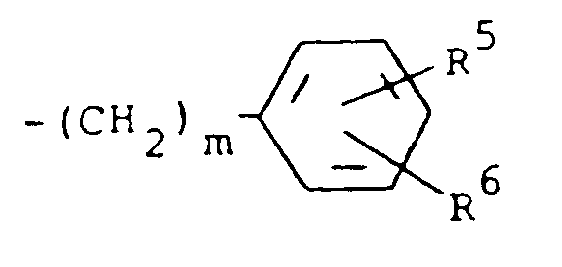
where m is 0 and R⁵ and R⁶ are each hydrogen.
where m is 0 and R⁵ and R⁶ are each hydrogen.
6. The compound of claim 4, wherein R¹ is -CH(OZ)R⁸ where R⁸ is methyl and R³ is a moiety
of the formula
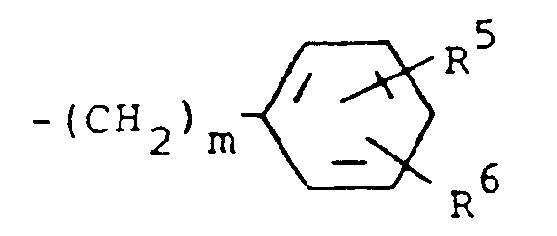
where m is 0 and R⁵ and R⁶ are each hydrogen.
where m is 0 and R⁵ and R⁶ are each hydrogen.
7. The compound of claim 4, wherein R¹ is -CH(OZ)R⁸ wherein R⁸ is hydrogen and R³ is
a moiety of the formula
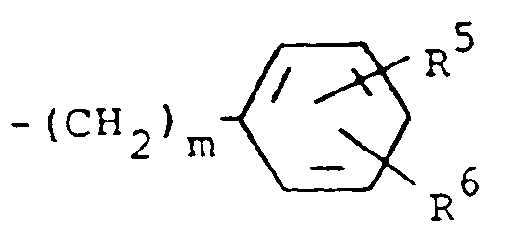
wherein m is 0 and R⁵ and R⁶ are each hydrogen.
wherein m is 0 and R⁵ and R⁶ are each hydrogen.
8. A compound of claim 1, wherein R² and R³ when taken together with the nitrogen atom
to which they are attached form a structure of the formula

9. A pharmaceutical composition comprising a compound of the formula (I) as claimed in
any one of claims 1 to 9 together with a pharmaceutically acceptable carrier or diluent.
Claims for the following Contracting State(s): ES, GR
1. A process for preparing a compound of the formula

or a pharmaceutically acceptable acid addition salt wherein
R¹ is hydrogen, alkyl having one to five carbon atoms, cycloalkyl having three to seven carbon atoms, phenylalkyl having from seven to nine carbon atoms, -COR⁴ where R⁴ is alkyl having from one to five carbon atoms, phenyl, hydroxy, amino, alkoxy having one to five carbon atoms, omega-carboxyalkyl having two to five carbon atoms, omega-alkoxycarbonylalkyl having from three to eight carbon atoms or -CH(OZ)R⁸ where R⁸ is hydrogen, alkyl having one to three carbon atoms, omega-carboxyalkyl having two to five carbon atoms or omega-alkoxycarbonyl having three to eight carbon atoms and Z is hydrogen or methoxyethoxymethyl;
R² is hydrogen or phenyl;
R³ is (a) cycloalkyl having three to seven carbon atoms, (b) cycloalkylalkyl having five to seven carbon atoms which optionally contains an oxygen, sulfur or nitrogen atom as a ring member, (c) a moiety of the formula
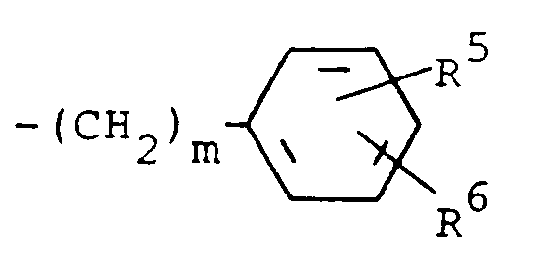
wherein m is an integer of 0 to 3 and R⁵ and R⁶ are each hydrogen, halo, carboxy, carbamoyl, carboalkoxy having two to four carbon atoms, alkoxvcarbonylmethyl having three to five carbon atoms, or sulfamoyl or (d) substituted alkyl of the formula R⁷-alkyl wherein said alkyl contains from five to twelve carbon atoms and R⁷ is hydroxy, carboxy, carboalkoxy having two to four carbon atoms or hydroxyalkoxy having two to four carbon atoms; or R² and R³ when taken together with the nitrogen atom to which they are attached form a structure of the formula

characterized by reacting a compound of the formula
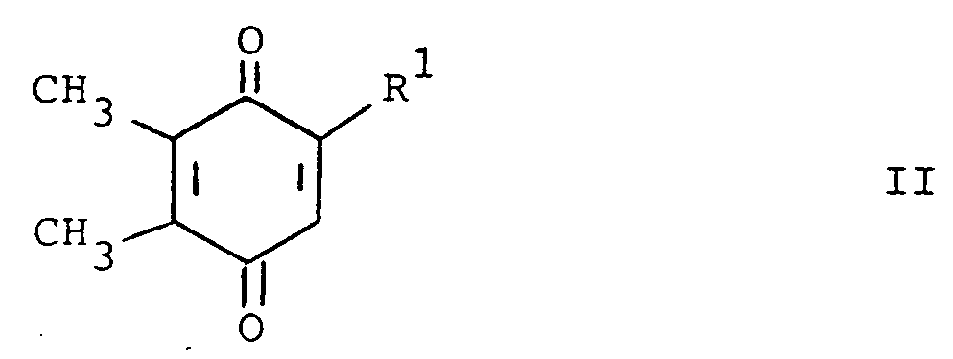
with a compound of the formula

where R¹, R² and R³ are as previously defined in the presence of an oxidizing agent in a reaction-inert solvent at room temperature until the reaction is substantially complete.
or a pharmaceutically acceptable acid addition salt wherein
R¹ is hydrogen, alkyl having one to five carbon atoms, cycloalkyl having three to seven carbon atoms, phenylalkyl having from seven to nine carbon atoms, -COR⁴ where R⁴ is alkyl having from one to five carbon atoms, phenyl, hydroxy, amino, alkoxy having one to five carbon atoms, omega-carboxyalkyl having two to five carbon atoms, omega-alkoxycarbonylalkyl having from three to eight carbon atoms or -CH(OZ)R⁸ where R⁸ is hydrogen, alkyl having one to three carbon atoms, omega-carboxyalkyl having two to five carbon atoms or omega-alkoxycarbonyl having three to eight carbon atoms and Z is hydrogen or methoxyethoxymethyl;
R² is hydrogen or phenyl;
R³ is (a) cycloalkyl having three to seven carbon atoms, (b) cycloalkylalkyl having five to seven carbon atoms which optionally contains an oxygen, sulfur or nitrogen atom as a ring member, (c) a moiety of the formula
wherein m is an integer of 0 to 3 and R⁵ and R⁶ are each hydrogen, halo, carboxy, carbamoyl, carboalkoxy having two to four carbon atoms, alkoxvcarbonylmethyl having three to five carbon atoms, or sulfamoyl or (d) substituted alkyl of the formula R⁷-alkyl wherein said alkyl contains from five to twelve carbon atoms and R⁷ is hydroxy, carboxy, carboalkoxy having two to four carbon atoms or hydroxyalkoxy having two to four carbon atoms; or R² and R³ when taken together with the nitrogen atom to which they are attached form a structure of the formula
characterized by reacting a compound of the formula
with a compound of the formula
where R¹, R² and R³ are as previously defined in the presence of an oxidizing agent in a reaction-inert solvent at room temperature until the reaction is substantially complete.
2. The process of claim 1, wherein the oxidizing agent is excess benzoquinone starting
reagent of formula II.
3. A process for preparing a compound of the formula
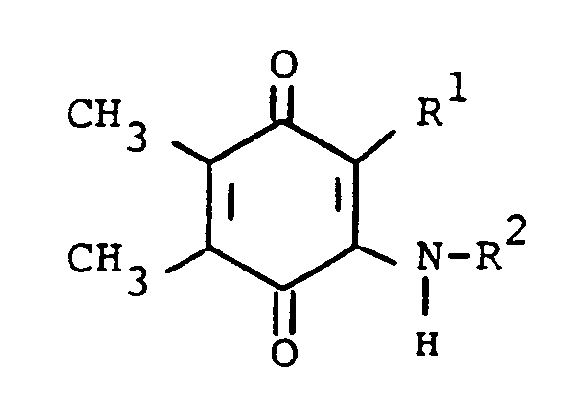
or a pharmaceutically acceptable acid addition salt thereof, wherein
R¹ is hydrogen, alkyl having one to five carbon atoms, cycloalkyl having three to seven carbon atoms, phenylalkyl having from seven to nine carbon atoms, -COR⁴ where R⁴ is alkyl having from one to five carbon atoms, phenyl, hydroxy, amino, alkoxy having one to five carbon atoms, omega-carboxyalkyl having two to five carbon atoms, omega-alkoxycarbonylalkyl having from three to eight carbon atoms or -CH(OZ)R⁸ where R⁸ is hydrogen, alkyl having one to three carbon atoms, omega-carboxyalkyl having two to five carbon atoms or omega-alkoxycarbonyl having three to eight carbon atoms and Z is hydrogen or methoxyethoxymethyl; and
R² is hydrogen or phenyl, characterized by reacting a compound of the formula

with a compound of the formula
H₂NR²
where R¹ and R² are previously defined in the presence of an oxidizing agent in a reaction-inert solvent at room temperature until the reaction is substantially complete.
or a pharmaceutically acceptable acid addition salt thereof, wherein
R¹ is hydrogen, alkyl having one to five carbon atoms, cycloalkyl having three to seven carbon atoms, phenylalkyl having from seven to nine carbon atoms, -COR⁴ where R⁴ is alkyl having from one to five carbon atoms, phenyl, hydroxy, amino, alkoxy having one to five carbon atoms, omega-carboxyalkyl having two to five carbon atoms, omega-alkoxycarbonylalkyl having from three to eight carbon atoms or -CH(OZ)R⁸ where R⁸ is hydrogen, alkyl having one to three carbon atoms, omega-carboxyalkyl having two to five carbon atoms or omega-alkoxycarbonyl having three to eight carbon atoms and Z is hydrogen or methoxyethoxymethyl; and
R² is hydrogen or phenyl, characterized by reacting a compound of the formula
with a compound of the formula
H₂NR²
where R¹ and R² are previously defined in the presence of an oxidizing agent in a reaction-inert solvent at room temperature until the reaction is substantially complete.
4. The process of claim 3, wherein the oxidizing agent is sodium iodate, sodium periodate,
sodium chlorate or manganese dioxide.
5. A process for preparing a compound of the formula

or a pharmaceutically acceptable acid addition salt thereof, wherein
R¹ is hydrogen, alkyl having one to five carbon atoms, cycloalkyl having three to seven carbon atoms, phenylalkyl having from seven to nine carbon atoms, -COR⁴ where R⁴ is alkyl having from one to five carbon atoms, phenyl, hydroxy, amino, alkoxy having one to five carbon atoms, omega-carboxyalkyl having two to five carbon atoms, omega-alkoxycarbonylalkyl having from three to eight carbon atoms or -CH(OZ)R⁸ where R⁸ is hydrogen, alkyl having one to three carbon atoms, omega-carboxyalkyl having two to five carbon atoms or omega-alkoxycarbonyl having three to eight carbon atoms and Z is hydrogen or methoxyethoxymethyl;
R² is hydrogen or phenyl; and
R³ is RCH₂ wherein RCH₂ is a moiety of the formula

wherein m is an integer of 0 to 3 and R⁵ and R⁶ are each hydrogen, halo, carboxy, carbamoyl, carboalkoxy having two to four carbon atoms, alkoxycarbonylmethyl having three to five carbon atoms, or sulfamoyl or substituted alkyl of the formula R⁷-alkyl wherein said alkyl contains from five to twelve carbon atoms and R⁷ is hydroxy, carboxy, carboalkoxy having two to four carbon atoms, hydroxyalkoxy having two to four carbon atoms or furyl, characterized by reacting a compound of the formula

where R¹, R² and R³ are previously defined with an oxidizing agent in a reaction-inert solvent at room temperature until the reaction is substantially complete.
or a pharmaceutically acceptable acid addition salt thereof, wherein
R¹ is hydrogen, alkyl having one to five carbon atoms, cycloalkyl having three to seven carbon atoms, phenylalkyl having from seven to nine carbon atoms, -COR⁴ where R⁴ is alkyl having from one to five carbon atoms, phenyl, hydroxy, amino, alkoxy having one to five carbon atoms, omega-carboxyalkyl having two to five carbon atoms, omega-alkoxycarbonylalkyl having from three to eight carbon atoms or -CH(OZ)R⁸ where R⁸ is hydrogen, alkyl having one to three carbon atoms, omega-carboxyalkyl having two to five carbon atoms or omega-alkoxycarbonyl having three to eight carbon atoms and Z is hydrogen or methoxyethoxymethyl;
R² is hydrogen or phenyl; and
R³ is RCH₂ wherein RCH₂ is a moiety of the formula
wherein m is an integer of 0 to 3 and R⁵ and R⁶ are each hydrogen, halo, carboxy, carbamoyl, carboalkoxy having two to four carbon atoms, alkoxycarbonylmethyl having three to five carbon atoms, or sulfamoyl or substituted alkyl of the formula R⁷-alkyl wherein said alkyl contains from five to twelve carbon atoms and R⁷ is hydroxy, carboxy, carboalkoxy having two to four carbon atoms, hydroxyalkoxy having two to four carbon atoms or furyl, characterized by reacting a compound of the formula
where R¹, R² and R³ are previously defined with an oxidizing agent in a reaction-inert solvent at room temperature until the reaction is substantially complete.
6. The process of claim 5, wherein the oxidizing agent is ferric chloride, manganese
dioxide, sodium periodate or sodium iodate.
Patentansprüche für folgende(n) Vertragsstaat(en): AT, BE, CH, DE, DK, FR, GB, IT,
LI, LU, NL, SE
1. Verbindung der Formel
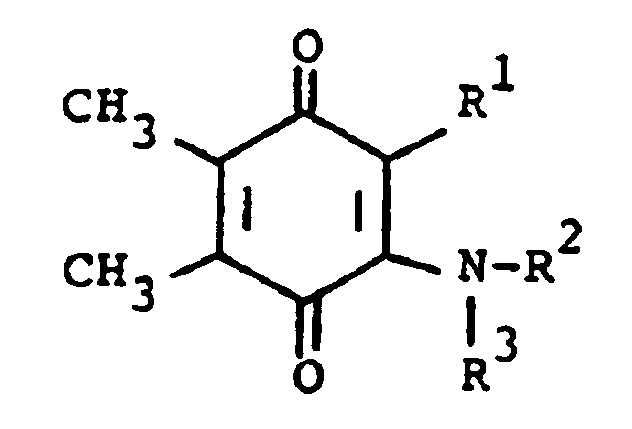
oder die pharmazeutisch verträglichen Salze davon, worin:
R¹ Wasserstoff, Alkyl mit 1 bis 5 Kohlenstoffatomen, Cycloalkyl mit 3 bis 7 Kohlenstoffatomen, Phenylalkyl mit 7 bis 9 Kohlenstoffatomen, -COR⁴, wobei R⁴ Alkyl mit 1 bis 5 Kohlenstoffatomen, Phenyl, Hydroxy, Amino, Alkoxy mit 1 bis 5 Kohlenstoffatomen, ω-Carboxyalkyl mit 2 bis 5 Kohlenstoffatomen, ω-Alkoxycarbonylalkyl mit 3 bis 8 Kohlenstoffatomen oder -CH(OZ)R⁸ bedeutet, wobei R⁸ Wasserstoff, Alkyl mit 1 bis 3 Kohlenstoffatomen, ω-Carboxyalkyl mit 2 bis 5 Kohlenstoffatomen oder ω-Alkoxycarbonyl mit 3 bis 8 Kohlenstoffatomen bedeutet und Z Wasserstoff oder Methoxyethoxymethyl darstellt;
R² Wasserstoff oder Phenyl bedeutet;
R³ (a) Cycloalkyl mit 3 bis 7 Kohlenstoffatomen, (b) Cycloalkylalkyl mit 5 bis 7 Kohlenstoffatomen, gegebenenfalls mit einem Sauerstoff-, Schwefel- oder Stickstoffatom als Ringglied, (c) einen Rest der Formel

worin m eine ganze Zahl von 0 bis 3 darstellt und R⁵ und R⁶ jeweils Wasserstoff, Halogen, Carboxy, Carbamoyl, Carboalkoxy mit 2 bis 4 Kohlenstoffatomen, Alkoxycarbonylmethyl mit 3 bis 5 Kohlenstoffatomen, oder Sulfamoyl bedeuten oder (d) eine substituierte Alkylgruppe der Formel R⁷-Alkyl bedeutet, worin die Alkylgruppe 5 bis 12 Kohlenstoffatome enthält und R⁷ Hydroxy, Carboxy, Carboalkoxy mit 2 bis 4 Kohlenstoffatomen oder Hydroxyalkoxy mit 2 bis 4 Kohlenstoffatomen bedeutet; oder R² und R³ zusammengenommen mit dem Stickstoffatom, an das sie gebunden sind, eine Struktur der Formel

bilden.
oder die pharmazeutisch verträglichen Salze davon, worin:
R¹ Wasserstoff, Alkyl mit 1 bis 5 Kohlenstoffatomen, Cycloalkyl mit 3 bis 7 Kohlenstoffatomen, Phenylalkyl mit 7 bis 9 Kohlenstoffatomen, -COR⁴, wobei R⁴ Alkyl mit 1 bis 5 Kohlenstoffatomen, Phenyl, Hydroxy, Amino, Alkoxy mit 1 bis 5 Kohlenstoffatomen, ω-Carboxyalkyl mit 2 bis 5 Kohlenstoffatomen, ω-Alkoxycarbonylalkyl mit 3 bis 8 Kohlenstoffatomen oder -CH(OZ)R⁸ bedeutet, wobei R⁸ Wasserstoff, Alkyl mit 1 bis 3 Kohlenstoffatomen, ω-Carboxyalkyl mit 2 bis 5 Kohlenstoffatomen oder ω-Alkoxycarbonyl mit 3 bis 8 Kohlenstoffatomen bedeutet und Z Wasserstoff oder Methoxyethoxymethyl darstellt;
R² Wasserstoff oder Phenyl bedeutet;
R³ (a) Cycloalkyl mit 3 bis 7 Kohlenstoffatomen, (b) Cycloalkylalkyl mit 5 bis 7 Kohlenstoffatomen, gegebenenfalls mit einem Sauerstoff-, Schwefel- oder Stickstoffatom als Ringglied, (c) einen Rest der Formel
worin m eine ganze Zahl von 0 bis 3 darstellt und R⁵ und R⁶ jeweils Wasserstoff, Halogen, Carboxy, Carbamoyl, Carboalkoxy mit 2 bis 4 Kohlenstoffatomen, Alkoxycarbonylmethyl mit 3 bis 5 Kohlenstoffatomen, oder Sulfamoyl bedeuten oder (d) eine substituierte Alkylgruppe der Formel R⁷-Alkyl bedeutet, worin die Alkylgruppe 5 bis 12 Kohlenstoffatome enthält und R⁷ Hydroxy, Carboxy, Carboalkoxy mit 2 bis 4 Kohlenstoffatomen oder Hydroxyalkoxy mit 2 bis 4 Kohlenstoffatomen bedeutet; oder R² und R³ zusammengenommen mit dem Stickstoffatom, an das sie gebunden sind, eine Struktur der Formel
bilden.
2. Verbindung nach Anspruch 1, wobei R¹ und R² jeweils Wasserstoff bedeuten.
3. Verbindung nach Anspruch 2, wobei R³ einen Rest der Formel

darstellt, worin m 0 bedeutet und R⁵ und R⁶ jeweils Wasserstoff darstellen.
darstellt, worin m 0 bedeutet und R⁵ und R⁶ jeweils Wasserstoff darstellen.
4. Verbindung nach Anspruch 1, wobei R¹ -COR⁴ oder -CH(OZ)R⁸ darstellt, wobei R⁴ Alkyl
mit 1 bis 5 Kohlenstoffatomen bedeutet, R⁸ Wasserstoff oder Alkyl mit 1 bis 3 Kohlenstoffatomen
bedeutet, Z Wasserstoff darstellt und R² Wasserstoff bedeutet.
5. Verbindung nach Anspruch 4, wobei R¹ -COR⁴ darstellt, wobei R⁴ Methyl ist, und R³
einen Rest der Formel
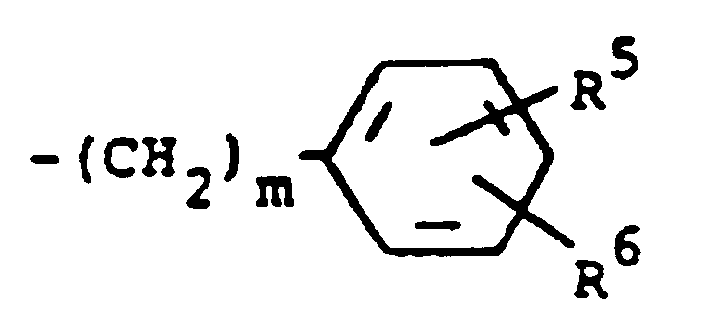
darstellt, worin m 0 bedeutet und R⁵ und R⁶ jeweils Wasserstoff darstellen.
darstellt, worin m 0 bedeutet und R⁵ und R⁶ jeweils Wasserstoff darstellen.
6. Verbindung nach Anspruch 4, wobei R¹ -CH(OZ)R⁸ darstellt, wobei R⁸ Methyl bedeutet
und R³ einen Rest der Formel
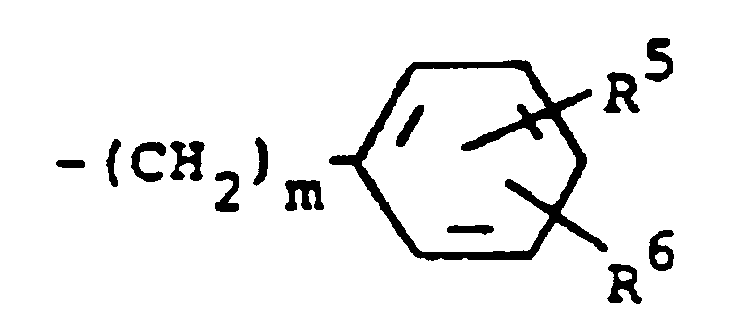
darstellt, worin m 0 bedeutet und R⁵ und R⁶ jeweils Wasserstoff darstellen.
darstellt, worin m 0 bedeutet und R⁵ und R⁶ jeweils Wasserstoff darstellen.
7. Verbindung nach Anspruch 4, wobei R¹ -CH(OZ)R⁸ darstellt, wobei R⁸ Wasserstoff bedeutet
und R³ einen Rest der Formel
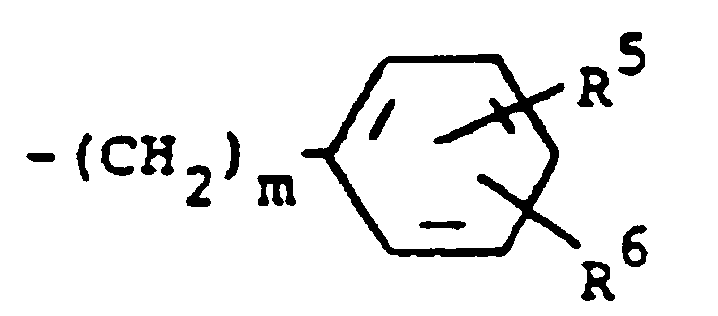
darstellt, worin m 0 bedeutet und R⁵ und R⁶ jeweils Wasserstoff darstellen.
darstellt, worin m 0 bedeutet und R⁵ und R⁶ jeweils Wasserstoff darstellen.
8. Verbindung nach Anspruch 1, wobei R² und R³ zusammengenommen mit dem Stickstoffatom,
an das sie gebunden sind, die Struktur der Formel
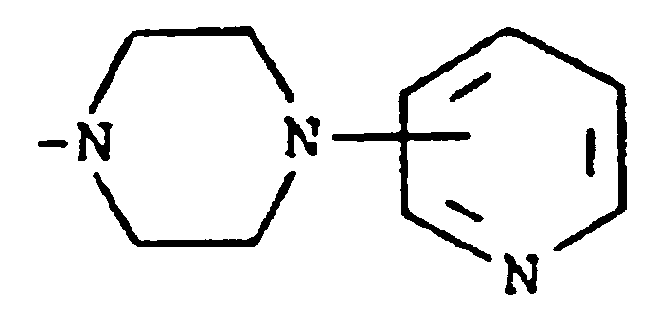
bilden.
bilden.
9. Arzneimittel, umfassend eine Verbindung der Formel (I) nach einem der Ansprüche 1
bis 9 gemeinsam mit einem pharmazeutisch verträglichen Träger- oder Verdünnungsmittel.
Patentansprüche für folgende(n) Vertragsstaat(en): ES, GR
1. Verfahren zur Herstellung einer Verbindung der Formel
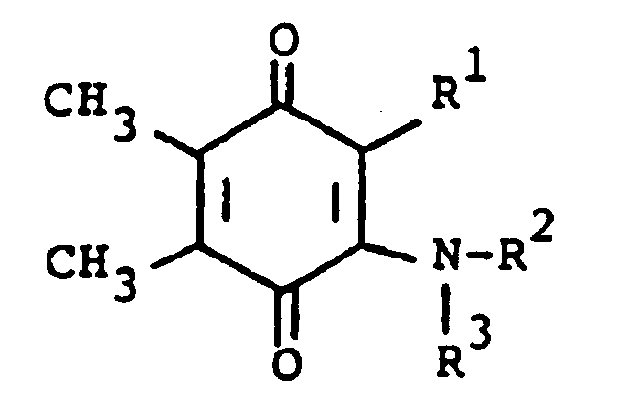
oder eines pharmazeutisch verträglichen Säureadditionssalzes davon, worin:
R¹ Wasserstoff, Alkyl mit 1 bis 5 Kohlenstoffatomen, Cycloalkyl mit 3 bis 7 Kohlenstoffatomen, Phenylalkyl mit 7 bis 9 Kohlenstoffatomen, -COR⁴, wobei R⁴ Alkyl mit 1 bis 5 Kohlenstoffatomen, Phenyl, Hydroxy, Amino, Alkoxy mit 1 bis 5 Kohlenstoffatomen, ω-Carboxyalkyl mit 2 bis 5 Kohlenstoffatomen, ω-Alkoxycarbonylalkyl mit 3 bis 8 Kohlenstoffatomen oder -CH(OZ)R⁸ bedeutet, wobei R⁸ Wasserstoff, Alkyl mit 1 bis 3 Kohlenstoffatomen, ω-Carboxyalkyl mit 2 bis 5 Kohlenstoffatomen oder ω-Alkoxycarbonyl mit 3 bis 8 Kohlenstoffatomen bedeutet und Z Wasserstoff oder Methoxyethoxymethyl darstellt;
R² Wasserstoff oder Phenyl bedeutet;
R³ (a) Cycloalkyl mit 3 bis 7 Kohlenstoffatomen, (b) Cycloalkylalkyl mit 5 bis 7 Kohlenstoffatomen, gegebenenfalls mit einem Sauerstoff-, Schwefel- oder Stickstoffatom als Ringglied, (c) einen Rest der Formel
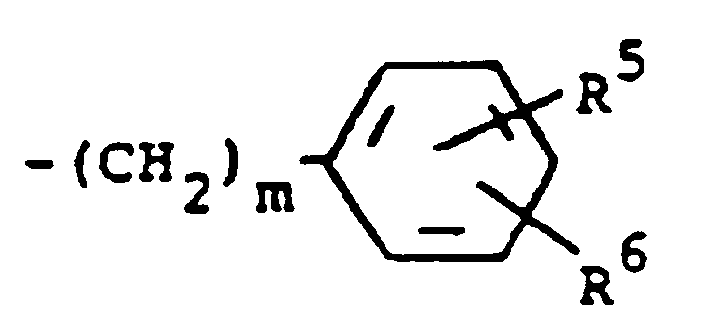
worin m eine ganze Zahl von 0 bis 3 darstellt und R⁵ und R⁶ jeweils Wasserstoff, Halogen, Carboxy, Carbamoyl, Carboalkoxy mit 2 bis 4 Kohlenstoffatomen, Alkoxycarbonylmethyl mit 3 bis 5 Kohlenstoffatomen, oder Sulfamoyl bedeutet oder (d) eine substituierte Alkylgruppe der Formel R⁷-Alkyl bedeutet, worin die Alkylgruppe 5 bis 12 Kohlenstoffatome enthält und R⁷ Hydroxy, Carboxy, Carboalkoxy mit 2 bis 4 Kohlenstoffatomen oder Hydroxyalkoxy mit 2 bis 4 Kohlenstoffatomen bedeutet; oder R² und R³ zusammengenommen mit dem Stickstoffatom, an das sie gebunden sind, eine Struktur der Formel
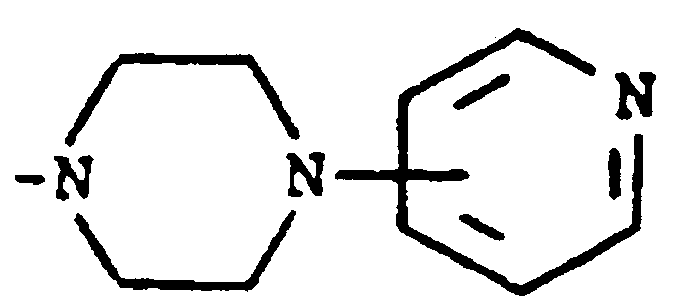
bilden, dadurch gekennzeichnet, daß eine Verbindung der Formel

umgesetzt wird mit einer Verbindung der Formel
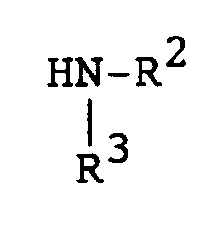
worin R¹, R² und R³ wie vorstehend definiert sind, in Gegenwart eines Oxidationsmittels in einem reaktionsinerten Lösungsmittel bei Raumtemperatur bis die Umsetzung im wesentlichen abgelaufen ist.
oder eines pharmazeutisch verträglichen Säureadditionssalzes davon, worin:
R¹ Wasserstoff, Alkyl mit 1 bis 5 Kohlenstoffatomen, Cycloalkyl mit 3 bis 7 Kohlenstoffatomen, Phenylalkyl mit 7 bis 9 Kohlenstoffatomen, -COR⁴, wobei R⁴ Alkyl mit 1 bis 5 Kohlenstoffatomen, Phenyl, Hydroxy, Amino, Alkoxy mit 1 bis 5 Kohlenstoffatomen, ω-Carboxyalkyl mit 2 bis 5 Kohlenstoffatomen, ω-Alkoxycarbonylalkyl mit 3 bis 8 Kohlenstoffatomen oder -CH(OZ)R⁸ bedeutet, wobei R⁸ Wasserstoff, Alkyl mit 1 bis 3 Kohlenstoffatomen, ω-Carboxyalkyl mit 2 bis 5 Kohlenstoffatomen oder ω-Alkoxycarbonyl mit 3 bis 8 Kohlenstoffatomen bedeutet und Z Wasserstoff oder Methoxyethoxymethyl darstellt;
R² Wasserstoff oder Phenyl bedeutet;
R³ (a) Cycloalkyl mit 3 bis 7 Kohlenstoffatomen, (b) Cycloalkylalkyl mit 5 bis 7 Kohlenstoffatomen, gegebenenfalls mit einem Sauerstoff-, Schwefel- oder Stickstoffatom als Ringglied, (c) einen Rest der Formel
worin m eine ganze Zahl von 0 bis 3 darstellt und R⁵ und R⁶ jeweils Wasserstoff, Halogen, Carboxy, Carbamoyl, Carboalkoxy mit 2 bis 4 Kohlenstoffatomen, Alkoxycarbonylmethyl mit 3 bis 5 Kohlenstoffatomen, oder Sulfamoyl bedeutet oder (d) eine substituierte Alkylgruppe der Formel R⁷-Alkyl bedeutet, worin die Alkylgruppe 5 bis 12 Kohlenstoffatome enthält und R⁷ Hydroxy, Carboxy, Carboalkoxy mit 2 bis 4 Kohlenstoffatomen oder Hydroxyalkoxy mit 2 bis 4 Kohlenstoffatomen bedeutet; oder R² und R³ zusammengenommen mit dem Stickstoffatom, an das sie gebunden sind, eine Struktur der Formel
bilden, dadurch gekennzeichnet, daß eine Verbindung der Formel
umgesetzt wird mit einer Verbindung der Formel
worin R¹, R² und R³ wie vorstehend definiert sind, in Gegenwart eines Oxidationsmittels in einem reaktionsinerten Lösungsmittel bei Raumtemperatur bis die Umsetzung im wesentlichen abgelaufen ist.
2. Verfahren nach Anspruch 1, wobei das Oxidationsmittel überschüssiges Benzochinonausgangsreagens
der Formel II ist.
3. Verfahren zur Herstellung einer Verbindung der Formel
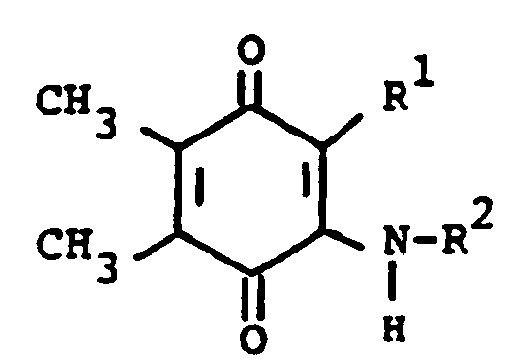
oder eines pharmazeutisch verträglichen Säureadditionssalzes davon, worin:
R¹ Wasserstoff, Alkyl mit 1 bis 5 Kohlenstoffatomen, Cycloalkyl mit 3 bis 7 Kohlenstoffatomen, Phenylalkyl mit 7 bis 9 Kohlenstoffatomen, -COR⁴, wobei R⁴ Alkyl mit 1 bis 5 Kohlenstoffatomen, Phenyl, Hydroxy, Amino, Alkoxy mit 1 bis 5 Kohlenstoffatomen, ω-Carboxyalkyl mit 2 bis 5 Kohlenstoffatomen, ω-Alkoxycarbonylalkyl mit 3 bis 8 Kohlenstoffatomen oder -CH(OZ)R⁸ bedeutet, wobei R⁸ Wasserstoff, Alkyl mit 1 bis 3 Kohlenstoffatomen, ω-Carboxyalkyl mit 2 bis 5 Kohlenstoffatomen oder ω-Alkoxycarbonyl mit 3 bis 8 Kohlenstoffatomen bedeutet und Z Wasserstoff oder Methoxyethoxymethyl darstellt; und
R² Wasserstoff oder Phenyl bedeutet;
dadurch gekennzeichnet, daß eine Verbindung der Formel

umgesetzt wird mit einer Verbindung der Formel
H₂NR²
worin R¹ und R² wie vorstehend definiert sind, in Gegenwart eines Oxidationsmittels in einem reaktionsinerten Lösungsmittel bei Raumtemperatur bis die Umsetzung im wesentlichen abgelaufen ist.
oder eines pharmazeutisch verträglichen Säureadditionssalzes davon, worin:
R¹ Wasserstoff, Alkyl mit 1 bis 5 Kohlenstoffatomen, Cycloalkyl mit 3 bis 7 Kohlenstoffatomen, Phenylalkyl mit 7 bis 9 Kohlenstoffatomen, -COR⁴, wobei R⁴ Alkyl mit 1 bis 5 Kohlenstoffatomen, Phenyl, Hydroxy, Amino, Alkoxy mit 1 bis 5 Kohlenstoffatomen, ω-Carboxyalkyl mit 2 bis 5 Kohlenstoffatomen, ω-Alkoxycarbonylalkyl mit 3 bis 8 Kohlenstoffatomen oder -CH(OZ)R⁸ bedeutet, wobei R⁸ Wasserstoff, Alkyl mit 1 bis 3 Kohlenstoffatomen, ω-Carboxyalkyl mit 2 bis 5 Kohlenstoffatomen oder ω-Alkoxycarbonyl mit 3 bis 8 Kohlenstoffatomen bedeutet und Z Wasserstoff oder Methoxyethoxymethyl darstellt; und
R² Wasserstoff oder Phenyl bedeutet;
dadurch gekennzeichnet, daß eine Verbindung der Formel
umgesetzt wird mit einer Verbindung der Formel
H₂NR²
worin R¹ und R² wie vorstehend definiert sind, in Gegenwart eines Oxidationsmittels in einem reaktionsinerten Lösungsmittel bei Raumtemperatur bis die Umsetzung im wesentlichen abgelaufen ist.
4. Verfahren nach Anspruch 3, wobei das Oxidationsmittel Natriumjodat, Natriumperjodat,
Natriumchlorat oder Mangandioxid ist.
5. Verfahren zur Herstellung einer Verbindung der Formel
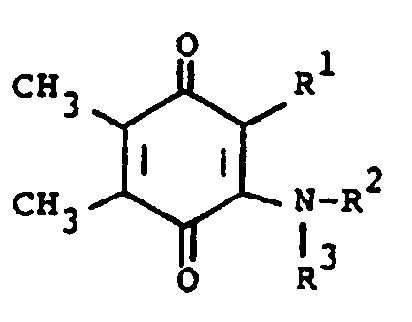
oder eines pharmazeutisch verträglichen Säureadditionssalzes davon, wobei
R¹ Wasserstoff, Alkyl mit 1 bis 5 Kohlenstoffatomen, Cycloalkyl mit 3 bis 7 Kohlenstoffatomen, Phenylalkyl mit 7 bis 9 Kohlenstoffatomen, -COR⁴, wobei R⁴ Alkyl mit 1 bis 5 Kohlenstoffatomen, Phenyl, Hydroxy, Amino, Alkoxy mit 1 bis 5 Kohlenstoffatomen, ω-Carboxyalkyl mit 2 bis 5 Kohlenstoffatomen, ω-Alkoxycarbonylalkyl mit 3 bis 8 Kohlenstoffatomen oder -CH(OZ)R⁸ bedeutet, wobei R⁸ Wasserstoff, Alkyl mit 1 bis 3 Kohlenstoffatomen, ω-Carboxyalkyl mit 2 bis 5 Kohlenstoffatomen oder ω-Alkoxycarbonyl mit 3 bis 8 Kohlenstoffatomen bedeutet und Z Wasserstoff oder Methoxyethoxymethyl darstellt;
R² Wasserstoff oder Phenyl bedeutet; und
R³ RCH₂ bedeutet, wobei RCH₂ einen Rest der Formel
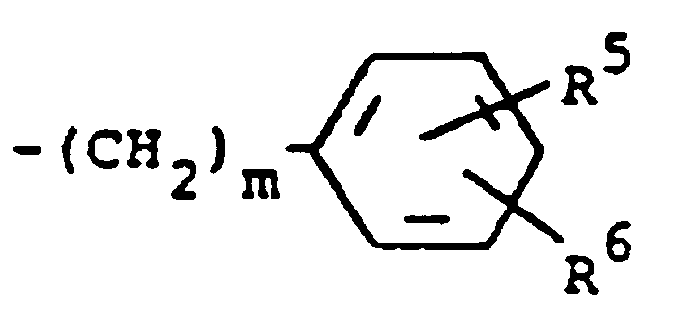
darstellt, worin m eine ganze Zahl von 0 bis 3 darstellt und R⁵ und R⁶ jeweils Wasserstoff, Halogen, Carboxy, Carbamoyl, Carboalkoxy mit 2 bis 4 Kohlenstoffatomen, Alkoxycarbonylmethyl mit 3 bis 5 Kohlenstoffatomen, oder Sulfamoyl bedeuten, oder eine substituierte Alkylgruppe der Formel R⁷-Alkyl bedeutet, worin die Alkylgruppe 5 bis 12 Kohlenstoffatome enthält und R⁷ Hydroxy, Carboxy, Carboalkoxy mit 2 bis 4 Kohlenstoffatomen, Hydroxyalkoxy mit 2 bis 4 Kohlenstoffatomen oder Furyl bedeutet, dadurch gekennzeichnet, daß eine Verbindung der Formel
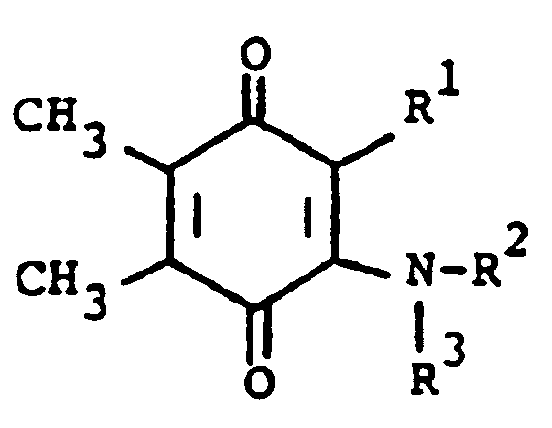
worin R¹, R² und R³ wie vorstehend definiert sind mit einem Oxidationsmittel in einem reaktionsinerten Lösungsmittel bei Raumtemperatur umgesetzt wird, bis die Umsetzung im wesentlichen vollständig abgelaufen ist.
oder eines pharmazeutisch verträglichen Säureadditionssalzes davon, wobei
R¹ Wasserstoff, Alkyl mit 1 bis 5 Kohlenstoffatomen, Cycloalkyl mit 3 bis 7 Kohlenstoffatomen, Phenylalkyl mit 7 bis 9 Kohlenstoffatomen, -COR⁴, wobei R⁴ Alkyl mit 1 bis 5 Kohlenstoffatomen, Phenyl, Hydroxy, Amino, Alkoxy mit 1 bis 5 Kohlenstoffatomen, ω-Carboxyalkyl mit 2 bis 5 Kohlenstoffatomen, ω-Alkoxycarbonylalkyl mit 3 bis 8 Kohlenstoffatomen oder -CH(OZ)R⁸ bedeutet, wobei R⁸ Wasserstoff, Alkyl mit 1 bis 3 Kohlenstoffatomen, ω-Carboxyalkyl mit 2 bis 5 Kohlenstoffatomen oder ω-Alkoxycarbonyl mit 3 bis 8 Kohlenstoffatomen bedeutet und Z Wasserstoff oder Methoxyethoxymethyl darstellt;
R² Wasserstoff oder Phenyl bedeutet; und
R³ RCH₂ bedeutet, wobei RCH₂ einen Rest der Formel
darstellt, worin m eine ganze Zahl von 0 bis 3 darstellt und R⁵ und R⁶ jeweils Wasserstoff, Halogen, Carboxy, Carbamoyl, Carboalkoxy mit 2 bis 4 Kohlenstoffatomen, Alkoxycarbonylmethyl mit 3 bis 5 Kohlenstoffatomen, oder Sulfamoyl bedeuten, oder eine substituierte Alkylgruppe der Formel R⁷-Alkyl bedeutet, worin die Alkylgruppe 5 bis 12 Kohlenstoffatome enthält und R⁷ Hydroxy, Carboxy, Carboalkoxy mit 2 bis 4 Kohlenstoffatomen, Hydroxyalkoxy mit 2 bis 4 Kohlenstoffatomen oder Furyl bedeutet, dadurch gekennzeichnet, daß eine Verbindung der Formel
worin R¹, R² und R³ wie vorstehend definiert sind mit einem Oxidationsmittel in einem reaktionsinerten Lösungsmittel bei Raumtemperatur umgesetzt wird, bis die Umsetzung im wesentlichen vollständig abgelaufen ist.
6. Verfahren nach Anspruch 5, wobei das Oxidationsmittel Eisen(III)chlorid, Mangandioxid,
Natriumperjodat oder Natriumjodat ist.
Revendications pour l'(les) Etat(s) contractant(s) suivant(s): AT, BE, CH, DE, DK,
FR, GB, IT, LI, LU, NL, SE
1. Composé de formule

ou ses sels pharmaceutiquement acceptables,
formule dans laquelle :
R¹ représente l'hydrogène, un groupe alkyle ayant un à cinq atomes de carbone, cycloalkyle ayant trois à sept atomes de carbone, phénylalkyle ayant sept à neuf atomes de carbone, un groupe -COR⁴ dans lequel R⁴ est un radical alkyle ayant un à cinq atomes de carbone, phényle, hydroxy, amino, alkoxy ayant un à cinq atomes de carbone, oméga-carboxyalkyle ayant deux à cinq atomes de carbone, oméga-alkoxycarbonylalkyle ayant trois à huit atomes de carbone ou un groupe -CH(OZ)R⁸ dans lequel R⁸ est l'hydrogène, un radical alkyle ayant un à trois atomes de carbone, oméga-carboxyalkyle ayant deux à cinq atomes de carbone ou oméga-alkoxycarbonyle ayant trois à huit atomes de carbone et Z est l'hydrogène ou un groupe méthoxyéthoxyméthyle ;
R² est l'hydrogène ou un groupe phényle ;
R³ représente (a) un groupe cycloalkyle ayant trois à sept atomes de carbone, (b) un groupe cycloalkylalkyle ayant cinq à sept atomes de carbone, qui contient facultativement un atome d'oxygène, de soufre ou d'azote comme chaînon du noyau, (c) un groupement de formule

dans laquelle m est un nombre entier de 0 à 3 et R⁵ et R⁶ représentent chacun de l'hydrogène, un radical halogéno, un groupe carboxy, carbamoyle, carbalkoxy ayant deux à quatre atomes de carbone, alkoxycarbonylméthyle ayant trois à cinq atomes de carbone ou sulfamoyle, ou bien (d) un groupe alkyle substitué de formule R⁷-alkyle dans laquelle ledit groupe alkyle contient cinq à douze atomes de carbone et R⁷ est un groupe hydroxy, carboxy, carbalkoxy ayant deux à quatre atomes de carbone ou un groupe hydroxyalkoxy ayant deux à quatre atomes de carbone ; ou bien R² et R³ forment, conjointement avec l'atome d'azote auquel ils sont attachés, une structure de formule
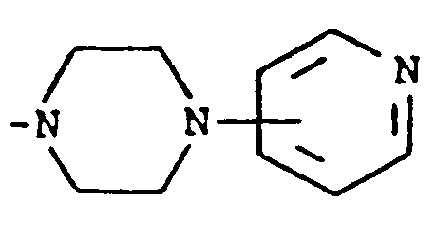
ou ses sels pharmaceutiquement acceptables,
formule dans laquelle :
R¹ représente l'hydrogène, un groupe alkyle ayant un à cinq atomes de carbone, cycloalkyle ayant trois à sept atomes de carbone, phénylalkyle ayant sept à neuf atomes de carbone, un groupe -COR⁴ dans lequel R⁴ est un radical alkyle ayant un à cinq atomes de carbone, phényle, hydroxy, amino, alkoxy ayant un à cinq atomes de carbone, oméga-carboxyalkyle ayant deux à cinq atomes de carbone, oméga-alkoxycarbonylalkyle ayant trois à huit atomes de carbone ou un groupe -CH(OZ)R⁸ dans lequel R⁸ est l'hydrogène, un radical alkyle ayant un à trois atomes de carbone, oméga-carboxyalkyle ayant deux à cinq atomes de carbone ou oméga-alkoxycarbonyle ayant trois à huit atomes de carbone et Z est l'hydrogène ou un groupe méthoxyéthoxyméthyle ;
R² est l'hydrogène ou un groupe phényle ;
R³ représente (a) un groupe cycloalkyle ayant trois à sept atomes de carbone, (b) un groupe cycloalkylalkyle ayant cinq à sept atomes de carbone, qui contient facultativement un atome d'oxygène, de soufre ou d'azote comme chaînon du noyau, (c) un groupement de formule
dans laquelle m est un nombre entier de 0 à 3 et R⁵ et R⁶ représentent chacun de l'hydrogène, un radical halogéno, un groupe carboxy, carbamoyle, carbalkoxy ayant deux à quatre atomes de carbone, alkoxycarbonylméthyle ayant trois à cinq atomes de carbone ou sulfamoyle, ou bien (d) un groupe alkyle substitué de formule R⁷-alkyle dans laquelle ledit groupe alkyle contient cinq à douze atomes de carbone et R⁷ est un groupe hydroxy, carboxy, carbalkoxy ayant deux à quatre atomes de carbone ou un groupe hydroxyalkoxy ayant deux à quatre atomes de carbone ; ou bien R² et R³ forment, conjointement avec l'atome d'azote auquel ils sont attachés, une structure de formule
2. Composé suivant la revendication 1, dans lequel R¹ et R² représentent chacun de l'hydrogène.
3. Composé suivant la revendication 2, dans lequel R³ est un groupement de formule
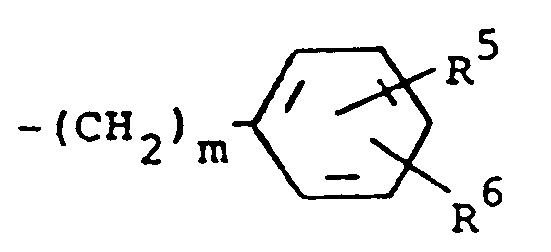
où m a la valeur 0, et R⁵ et R⁶ représentent chacun de l'hydrogène.
où m a la valeur 0, et R⁵ et R⁶ représentent chacun de l'hydrogène.
4. Composé suivant la revendication 1, dans lequel R¹ est un groupe -COR⁴ ou -CH(OZ)R⁸
où R⁴ est un groupe alkyle ayant un à cinq atomes de carbone, R⁸ est de l'hydrogène
ou un groupe alkyle ayant un à trois atomes de carbone, Z est de l'hydrogène et R²
est de l'hydrogène.
5. Composé suivant la revendication 4, dans lequel R¹ est un groupe -COR⁴ où R⁴ est un
radical méthyle et R³ est un groupe de formule
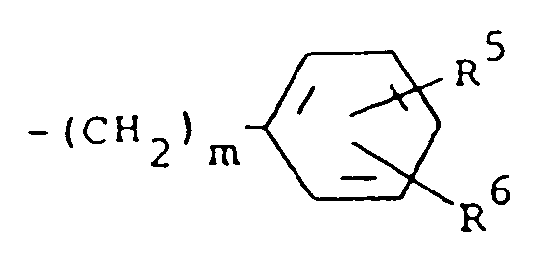
dans laquelle m a la valeur 0 et R⁵ et R⁶ représentent chacun de l'hydrogène.
dans laquelle m a la valeur 0 et R⁵ et R⁶ représentent chacun de l'hydrogène.
6. Composé suivant la revendication 4, dans lequel R¹ est un groupe -CH(OZ)R⁸ où R⁸ est
un radical méthyle et R³ est un groupement de formule
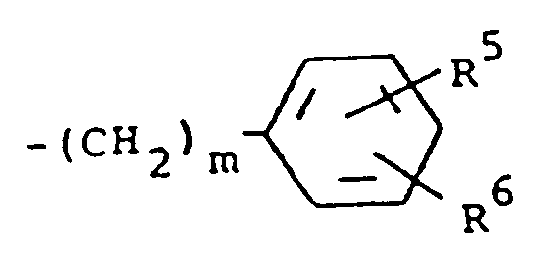
dans laquelle m a la valeur 0 et R⁵ et R⁶ sont chacun de l'hydrogène.
dans laquelle m a la valeur 0 et R⁵ et R⁶ sont chacun de l'hydrogène.
7. Composé suivant la revendication 4, dans lequel R¹ est un groupe -CH(OZ)R⁸ où R⁸ est
de l'hydrogène et R³ est un groupement de formule
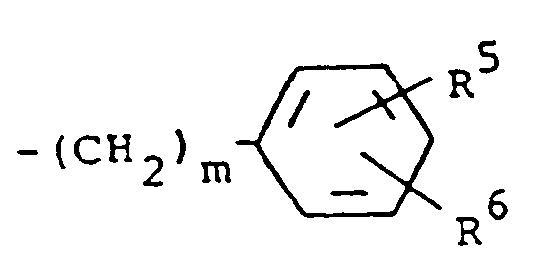
dans laquelle m a la valeur 0 et R⁵ et R⁶ sont tous deux de l'hydrogène.
dans laquelle m a la valeur 0 et R⁵ et R⁶ sont tous deux de l'hydrogène.
8. Composé suivant la revendication 1, dans lequel R² et R³ forment, conjointement avec
l'atome d'azote auquel ils sont attachés, une structure de formule
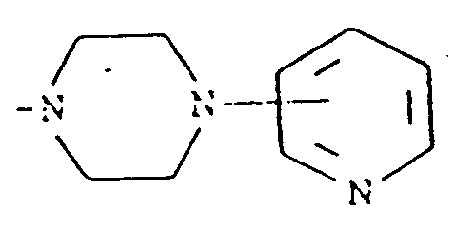
9. Composition pharmaceutique comprenant un composé de formule (I) suivant l'une quelconque
des revendications 1 à 9 en association avec un support ou diluant acceptable du point
de vue pharmaceutique.
Revendications pour l'(les) Etat(s) contractant(s) suivant(s): ES, GR
1. Procédé de production d'un composé de formule

ou d'un sel d'addition d'acides pharmaceutiquement acceptables de ce composé, formule dans laquelle :
R¹ représente l'hydrogène, un groupe alkyle ayant un à cinq atomes de carbone, cycloalkyle ayant trois à sept atomes de carbone, phénylalkyle ayant sept à neuf atomes de carbone, un groupe -COR⁴ dans lequel R⁴ est un radical alkyle ayant un à cinq atomes de carbone, phényle, hydroxy, amino, alkoxy ayant un à cinq atomes de carbone, oméga-carboxyalkyle ayant deux à cinq atomes de carbone, oméga-alkoxycarbonylalkyle ayant trois à huit atomes de carbone ou un groupe -CH(OZ)R⁸ dans lequel R⁸ est l'hydrogène, un radical alkyle ayant un à trois atomes de carbone, oméga-carboxyalkyle ayant deux à cinq atomes de carbone ou oméga-alkoxycarbonyle ayant trois à huit atomes de carbone et Z est l'hydrogène ou un groupe méthoxyéthoxyméthyle ;
R² est l'hydrogène ou un groupe phényle ;
R³ représente (a) un groupe cycloalkyle ayant trois à sept atomes de carbone, (b) un groupe cycloalkylalkyle ayant cinq à sept atomes de carbone, qui contient facultativement un atome d'oxygène, de soufre ou d'azote comme chaînon du noyau, (c) un groupement de formule
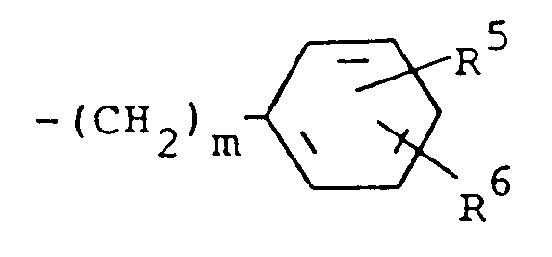
dans laquelle m est un nombre entier de 0 à 3 et R⁵ et R⁶ représentent chacun de l'hydrogène, un radical halogéno, un groupe carboxy, carbamoyle, carbalkoxy ayant deux à quatre atomes de carbone, alkoxycarbonylméthyle ayant trois à cinq atomes de carbone ou sulfamoyle, ou bien (d) un groupe alkyle substitué de formule R⁷-alkyle dans laquelle ledit groupe alkyle contient cinq à douze atomes de carbone et R⁷ est un groupe hydroxy, carboxy, carbalkoxy ayant deux à quatre atomes de carbone ou un groupe hydroxyalkoxy ayant deux à quatre atomes de carbone ; ou bien R² et R³ forment, conjointement avec l'atome d'azote auquel ils sont attachés, une structure de formule
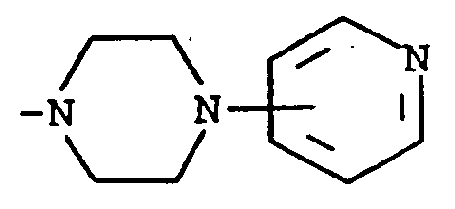
caractérisé par la réaction d'un composé de formule

avec un composé de formule
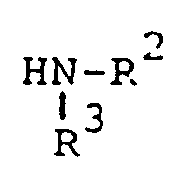
où R¹, R² et R³ sont tels que définis ci-dessus, en présence d'un agent oxydant dans un solvant inerte vis-à-vis de la réaction, à la température ambiante jusqu'à ce que la réaction soit principalement terminée.
ou d'un sel d'addition d'acides pharmaceutiquement acceptables de ce composé, formule dans laquelle :
R¹ représente l'hydrogène, un groupe alkyle ayant un à cinq atomes de carbone, cycloalkyle ayant trois à sept atomes de carbone, phénylalkyle ayant sept à neuf atomes de carbone, un groupe -COR⁴ dans lequel R⁴ est un radical alkyle ayant un à cinq atomes de carbone, phényle, hydroxy, amino, alkoxy ayant un à cinq atomes de carbone, oméga-carboxyalkyle ayant deux à cinq atomes de carbone, oméga-alkoxycarbonylalkyle ayant trois à huit atomes de carbone ou un groupe -CH(OZ)R⁸ dans lequel R⁸ est l'hydrogène, un radical alkyle ayant un à trois atomes de carbone, oméga-carboxyalkyle ayant deux à cinq atomes de carbone ou oméga-alkoxycarbonyle ayant trois à huit atomes de carbone et Z est l'hydrogène ou un groupe méthoxyéthoxyméthyle ;
R² est l'hydrogène ou un groupe phényle ;
R³ représente (a) un groupe cycloalkyle ayant trois à sept atomes de carbone, (b) un groupe cycloalkylalkyle ayant cinq à sept atomes de carbone, qui contient facultativement un atome d'oxygène, de soufre ou d'azote comme chaînon du noyau, (c) un groupement de formule
dans laquelle m est un nombre entier de 0 à 3 et R⁵ et R⁶ représentent chacun de l'hydrogène, un radical halogéno, un groupe carboxy, carbamoyle, carbalkoxy ayant deux à quatre atomes de carbone, alkoxycarbonylméthyle ayant trois à cinq atomes de carbone ou sulfamoyle, ou bien (d) un groupe alkyle substitué de formule R⁷-alkyle dans laquelle ledit groupe alkyle contient cinq à douze atomes de carbone et R⁷ est un groupe hydroxy, carboxy, carbalkoxy ayant deux à quatre atomes de carbone ou un groupe hydroxyalkoxy ayant deux à quatre atomes de carbone ; ou bien R² et R³ forment, conjointement avec l'atome d'azote auquel ils sont attachés, une structure de formule
caractérisé par la réaction d'un composé de formule
avec un composé de formule
où R¹, R² et R³ sont tels que définis ci-dessus, en présence d'un agent oxydant dans un solvant inerte vis-à-vis de la réaction, à la température ambiante jusqu'à ce que la réaction soit principalement terminée.
2. Procédé suivant la revendication 1, dans lequel l'agent oxydant est le réactif benzoquinonique
de départ de formule II présent en excès.
3. Procédé de production d'un composé de formule
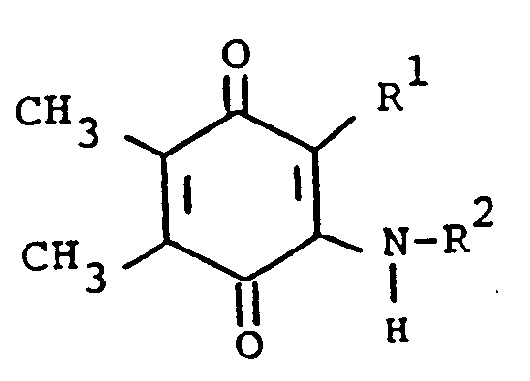
ou d'un sel d'addition d'acides pharmaceutiquement acceptables de ce composé, formule dans laquelle
R¹ représente l'hydrogène, un groupe alkyle ayant un à cinq atomes de carbone, cycloalkyle ayant trois à sept atomes de carbone, phénylalkyle ayant sept à neuf atomes de carbone, un groupe -COR⁴ dans lequel R⁴ est un radical alkyle ayant un à cinq atomes de carbone, phényle, hydroxy, amino, alkoxy ayant un à cinq atomes de carbone, oméga-carboxyalkyle ayant deux à cinq atomes de carbone, oméga-alkoxycarbonylalkyle ayant trois à huit atomes de carbone ou -CH(OZ)R⁸, où R⁸ est l'hydrogène, un groupe alkyle ayant un à trois atomes de carbone, oméga-carboxyalkyle ayant deux à cinq atomes de carbone ou oméga-alkoxycarbonyle ayant trois à huit atomes de carbone et Z est de l'hydrogène ou un groupe méthoxyéthoxyméthyle ; et
R² est de l'hydrogène ou un groupe phényle, caractérisé par la réaction d'un composé de formule

avec un composé de formule
H₂NR²
où R¹ et R² sont tels que définis précédemment en présence d'un agent oxydant dans un solvant inerte vis-à-vis de la réaction à la température ambiante jusqu'à ce que la réaction soit principalement terminée.
ou d'un sel d'addition d'acides pharmaceutiquement acceptables de ce composé, formule dans laquelle
R¹ représente l'hydrogène, un groupe alkyle ayant un à cinq atomes de carbone, cycloalkyle ayant trois à sept atomes de carbone, phénylalkyle ayant sept à neuf atomes de carbone, un groupe -COR⁴ dans lequel R⁴ est un radical alkyle ayant un à cinq atomes de carbone, phényle, hydroxy, amino, alkoxy ayant un à cinq atomes de carbone, oméga-carboxyalkyle ayant deux à cinq atomes de carbone, oméga-alkoxycarbonylalkyle ayant trois à huit atomes de carbone ou -CH(OZ)R⁸, où R⁸ est l'hydrogène, un groupe alkyle ayant un à trois atomes de carbone, oméga-carboxyalkyle ayant deux à cinq atomes de carbone ou oméga-alkoxycarbonyle ayant trois à huit atomes de carbone et Z est de l'hydrogène ou un groupe méthoxyéthoxyméthyle ; et
R² est de l'hydrogène ou un groupe phényle, caractérisé par la réaction d'un composé de formule
avec un composé de formule
H₂NR²
où R¹ et R² sont tels que définis précédemment en présence d'un agent oxydant dans un solvant inerte vis-à-vis de la réaction à la température ambiante jusqu'à ce que la réaction soit principalement terminée.
4. Procédé suivant la revendication 3, dans lequel l'agent oxydant est l'iodate de sodium,
le périodate de sodium, le chlorate de sodium ou le dioxyde de manganèse.
5. Procédé de production d'un composé de formule
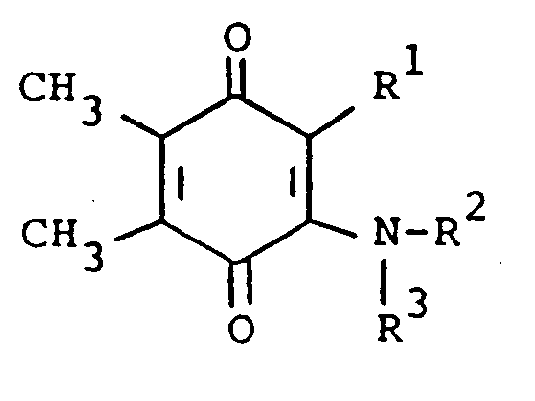
ou d'un sel d'addition pharmaceutiquement acceptable de ce composé, formule dans laquelle
R¹ est de l'hydrogène, un groupe alkyle ayant un à cinq atomes de carbone, cycloalkyle ayant trois à sept atomes de carbone, phénylalkyle ayant sept à neuf atomes de carbone, -COR⁴ où R⁴ est un groupe alkyle ayant un à cinq atomes de carbone, phényle, hydroxy, amino, alkoxy ayant un à cinq atomes de carbone, oméga-carboxyalkyle ayant deux à cinq atomes de carbone, oméga-alkoxycarbonylalkyle ayant trois à huit atomes de carbone ou -CH(OZ)R⁸, où R⁸ est de l'hydrogène, un groupe alkyle ayant un à trois atomes de carbone, oméga-carboxyalkyle ayant deux à cinq atomes de carbone ou oméga-alkoxycarbonyle ayant trois à huit atomes de carbone, et Z est de l'hydrogène ou un groupe méthoxyéthoxyméthyle ;
R² est de l'hydrogène ou un groupe phényle ; et
R³ est un groupe RCH₂, lequel est un groupement de formule
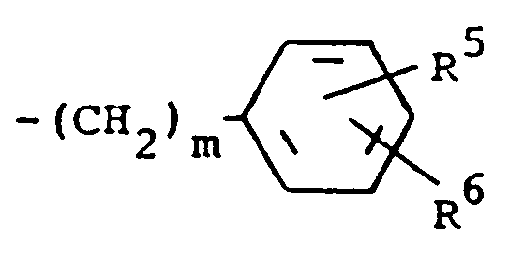
dans laquelle m est un nombre entier de 0 à 3 et R⁵ et R⁶ représentent chacun de l'hydrogène, un radical halogéno, carboxy, carbamoyle, carbalkoxy ayant deux à quatre atomes de carbone, alkoxycarbonylméthyle ayant trois à cinq atomes de carbone, ou sulfamoyle ou alkyle substitué de formule R⁷-alkyle dans laquelle le radical alkyle contient cinq à douze atomes de carbone et R⁷ est un groupe hydroxy, carboxy, carbalkoxy ayant deux à quatre atomes de carbone, hydroxyalkoxy ayant deux à quatre atomes de carbone ou furyle, caractérisé par la réaction d'un composé de formule
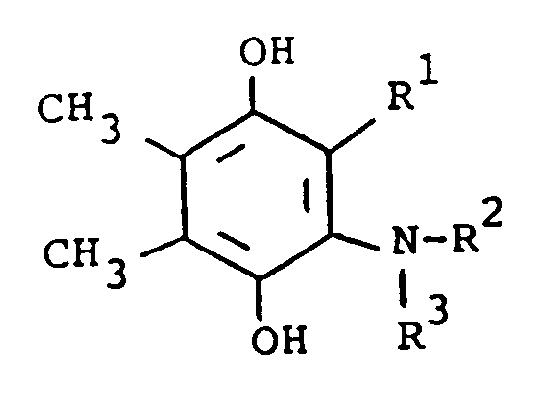
dans laquelle R¹, R² et R³ sont tels que définis ci-dessus, avec un agent oxydant dans un solvant inerte vis-à-vis de la réaction à la température ambiante jusqu'à ce que la réaction soit principalement terminée.
ou d'un sel d'addition pharmaceutiquement acceptable de ce composé, formule dans laquelle
R¹ est de l'hydrogène, un groupe alkyle ayant un à cinq atomes de carbone, cycloalkyle ayant trois à sept atomes de carbone, phénylalkyle ayant sept à neuf atomes de carbone, -COR⁴ où R⁴ est un groupe alkyle ayant un à cinq atomes de carbone, phényle, hydroxy, amino, alkoxy ayant un à cinq atomes de carbone, oméga-carboxyalkyle ayant deux à cinq atomes de carbone, oméga-alkoxycarbonylalkyle ayant trois à huit atomes de carbone ou -CH(OZ)R⁸, où R⁸ est de l'hydrogène, un groupe alkyle ayant un à trois atomes de carbone, oméga-carboxyalkyle ayant deux à cinq atomes de carbone ou oméga-alkoxycarbonyle ayant trois à huit atomes de carbone, et Z est de l'hydrogène ou un groupe méthoxyéthoxyméthyle ;
R² est de l'hydrogène ou un groupe phényle ; et
R³ est un groupe RCH₂, lequel est un groupement de formule
dans laquelle m est un nombre entier de 0 à 3 et R⁵ et R⁶ représentent chacun de l'hydrogène, un radical halogéno, carboxy, carbamoyle, carbalkoxy ayant deux à quatre atomes de carbone, alkoxycarbonylméthyle ayant trois à cinq atomes de carbone, ou sulfamoyle ou alkyle substitué de formule R⁷-alkyle dans laquelle le radical alkyle contient cinq à douze atomes de carbone et R⁷ est un groupe hydroxy, carboxy, carbalkoxy ayant deux à quatre atomes de carbone, hydroxyalkoxy ayant deux à quatre atomes de carbone ou furyle, caractérisé par la réaction d'un composé de formule
dans laquelle R¹, R² et R³ sont tels que définis ci-dessus, avec un agent oxydant dans un solvant inerte vis-à-vis de la réaction à la température ambiante jusqu'à ce que la réaction soit principalement terminée.
6. Procédé suivant la revendication 5, dans lequel l'agent oxydant est le chlorure ferrique,
le dioxyde de manganèse, le periodate de sodium ou l'iodate de sodium.
